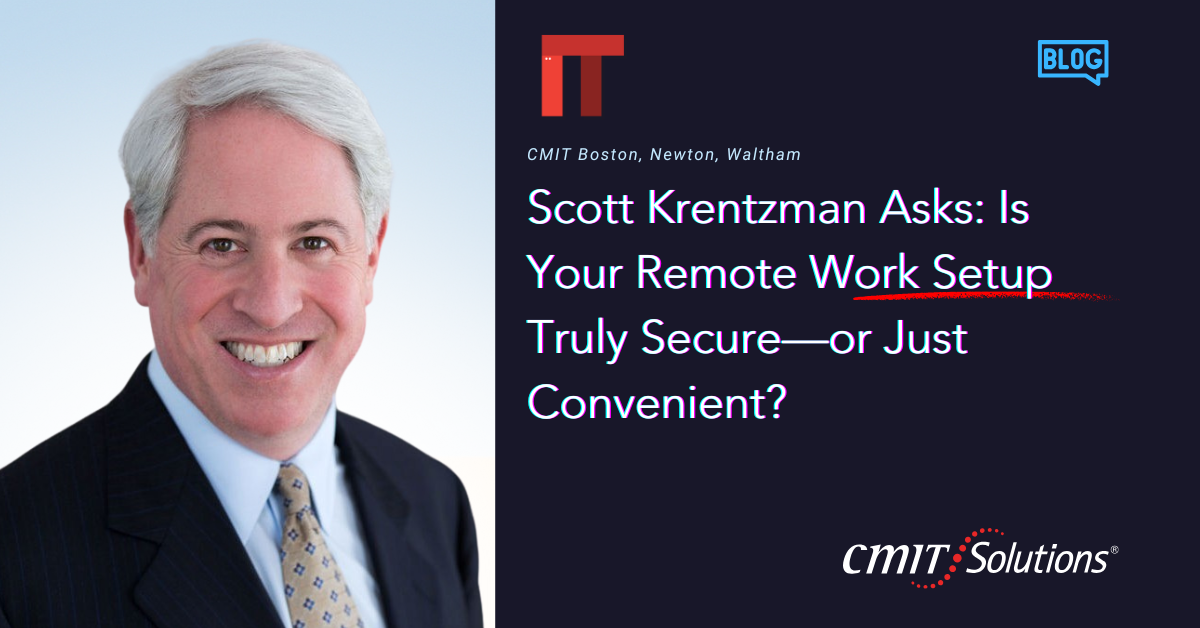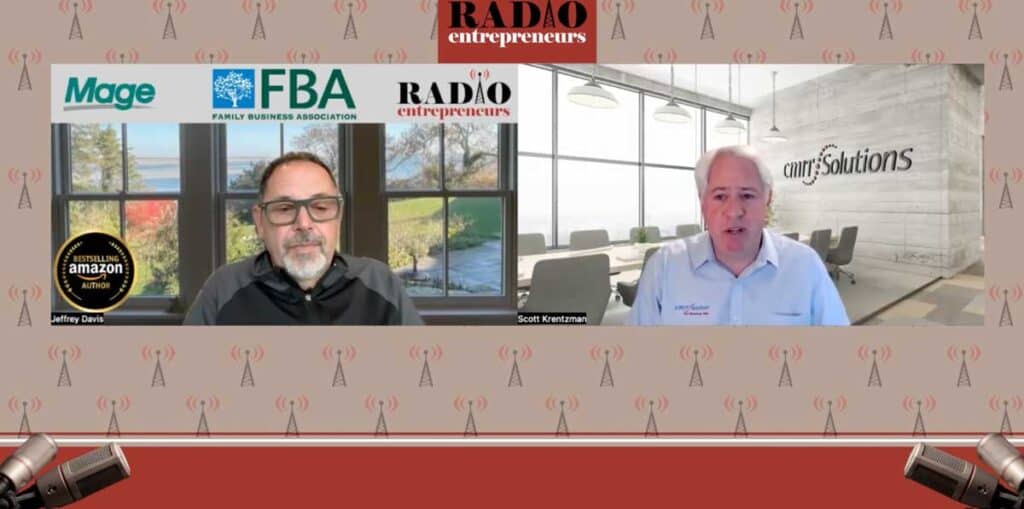Introduction: A Shift in the Workplace, A Surge in Cyber Risk
The post-pandemic era cemented one of the most transformative trends in modern business—remote and hybrid work. While this shift brought undeniable flexibility, it also unleashed a new wave of cybersecurity vulnerabilities. Scott Krentzman, a trusted IT advisor and the leader behind CMIT Solutions of Boston, Newton & Waltham, challenges small business leaders to ask a critical question: Is your remote work setup genuinely secure, or is it merely built around convenience?
The reality? Most small and mid-sized businesses (SMBs) rushed to enable remote access but failed to address underlying cybersecurity frameworks. In doing so, they exposed sensitive data, undermined compliance, and invited sophisticated cyberattacks. What follows is an in-depth look at the common mistakes SMBs make, how Zero Trust and cloud security strategies offer solutions, and how Scott Krentzman’s expertise bridges the gap between digital transformation and security.
Why This Question Matters Now
The remote work shift gave businesses the flexibility to operate from anywhere. But flexibility often came at the cost of security. Scott Krentzman, owner of CMIT Solutions of Boston, Newton & Waltham, has worked closely with businesses across industries to reveal a hard truth: many setups are convenient—but dangerously vulnerable. This blog explores what remote work security really means, the most common mistakes, and how Scott helps turn remote environments from liabilities into long-term business assets.
Understanding Remote Work Security: More Than a VPN
Remote security isn’t just a matter of checking off boxes—it’s a living strategy. Scott’s model focuses on a layered defense system, especially when teams operate across home networks, personal devices, and cloud-based systems.
Scott’s key components of a secure remote setup include:
- Multi-factor authentication (MFA): Critical for all applications, especially cloud services.
- Device monitoring: Endpoint Detection and Response (EDR) tools to watch every laptop, tablet, or phone.
- Encrypted communication: Tools like secure messaging and protected email gateways.
- Role-based access: Limiting data and app access to only those who need it.
- Continuous logging: Tracks activity for threat detection and compliance.
These align closely with best practices in AI-driven cybersecurity and Zero Trust architecture.
Common Security Pitfalls Scott Krentzman Sees in SMBs
Many small businesses operate with good intentions—but poor implementation. Scott regularly encounters preventable errors that leave systems wide open.
Most frequent issues Scott resolves include:
- Weak password policies or reused credentials.
- Lack of a backup and disaster recovery plan.
- No user training against phishing and social engineering.
- Over-permissive file sharing on cloud platforms.
- Shadow IT: Employees using unauthorized tools without IT oversight.
Scott fixes these problems by enforcing policy templates, configuring secure cloud environments, and building resilience into every layer—practices grounded in cybersecurity best practices.
The Cloud Isn’t Automatically Secure
Cloud platforms are powerful, but they’re not foolproof. Scott regularly helps clients understand that security is a shared responsibility—the cloud provider protects infrastructure, while your team must protect data and access.
One client unknowingly shared private folders publicly due to default permissions. Scott resolved it by:
- Enforcing role-based file access.
- Turning on encryption at rest and in transit.
- Creating audit trails and admin alerts.
- Backing up cloud data using third-party secure solutions.
This configuration reflects strategies used in managed IT services to ensure performance and security are both maintained.
Fighting Ransomware, One Device at a Time
Ransomware thrives in remote environments. Scott has saved clients from paying six-figure ransoms by setting up:
- Real-time monitoring for unusual file activity
- File rollback and version history on key apps
- Staff training based on ransomware defense playbooks
- 24/7 managed response teams who isolate infections quickly
When one Boston manufacturer had an infected laptop, Scott’s team contained the breach in minutes. No data was lost. No ransom paid.
Compliance Doesn’t Pause for Remote Teams
Whether your company handles HIPAA, CCPA, or financial data, compliance still applies—no matter where your staff works. Scott builds frameworks to help you meet legal requirements and avoid fines.
For example, he recently helped a Boston clinic upgrade their telehealth system by:
- Securing video calls with HIPAA-compliant encryption
- Locking down EMR access with MFA and geofencing
- Providing monthly audit trails for compliance checks
These solutions mirror CMIT’s approach to IT services for healthcare and help clients breathe easier knowing they’re covered.
Managed IT: The Secret Weapon You Didn’t Know You Needed
“Most SMBs think managed IT is for big companies,” Scott says. “But it’s the small ones who need it most.”
With Scott and CMIT Solutions, you get:
- 24/7 monitoring and threat detection
- Remote help desk and on-site support
- Regular system updates and patching
- Virtual CIO consulting to plan your next move
This proactive care reduces downtime, saves money, and future-proofs your business—core benefits covered in business IT growth strategies.
Disaster Recovery Is Not Optional—Scott Builds It In
Accidents happen. Devices get lost. Power goes out. Files are deleted. Scott prepares businesses for all of it.
His disaster recovery plans include:
- Off-site and cloud-based daily backups
- Instant recovery systems for email, files, and servers
- Written step-by-step recovery playbooks
- Quarterly tests to make sure the plan actually works
One retail client faced a cyberattack during the holiday rush. Because of Scott’s system, they were back online in less than two hours. No lost sales. No PR nightmare.
Conclusion: From Reactive to Resilient—with Scott Krentzman on Your Side
Remote work is no longer an experiment—it’s the new standard. But Scott Krentzman reminds us that “standard” should never mean “status quo.”
With a personal touch, technical depth, and proactive mindset, Scott transforms reactive IT into resilient systems. He doesn’t just fix problems—he prevents them. His solutions scale with your business, protect your brand, and give you the confidence to grow in any environment.
If you’re unsure whether your setup is truly secure—or just running on luck—it’s time to find out. And there’s no better partner to do it with than Scott and his team at CMIT Solutions of Boston, Newton & Waltham.






